Tattoos can be a powerful form of self-expression, but sometimes it’s necessary to cover them up for professional or social reasons. If you are wondering how to cover tattoos for work, there are lots of options out there. Whether you need something that hides away all ink or just lightens the vibrancy so your body art is not as noticeable, we have some tips and tricks to make sure if your job requires you to hide your tattoos in an office setting or during important events, they won’t be seen!
Check Workplace Policies
Before you start investing in tattoo cover-up tools and techniques, it’s imperative to understand your workplace policies on tattoos. Many workplaces have explicit written policies on the visibility of tattoos, while others may have an unwritten culture around body art. By checking your company’s handbook or speaking directly with your HR department, you can gain clarity on the acceptable parameters. This process not only protects you from potential disciplinary action but also saves you unnecessary effort if your workplace is more lenient than you initially thought.
In some instances, a conversation with a trusted colleague or supervisor might also be enlightening, as they could provide a firsthand perspective on how tattoos are perceived within your specific work environment. Understanding these policies is the first step towards navigating the professional landscape with a tattoo and sets the foundation for the strategies required to manage its visibility.
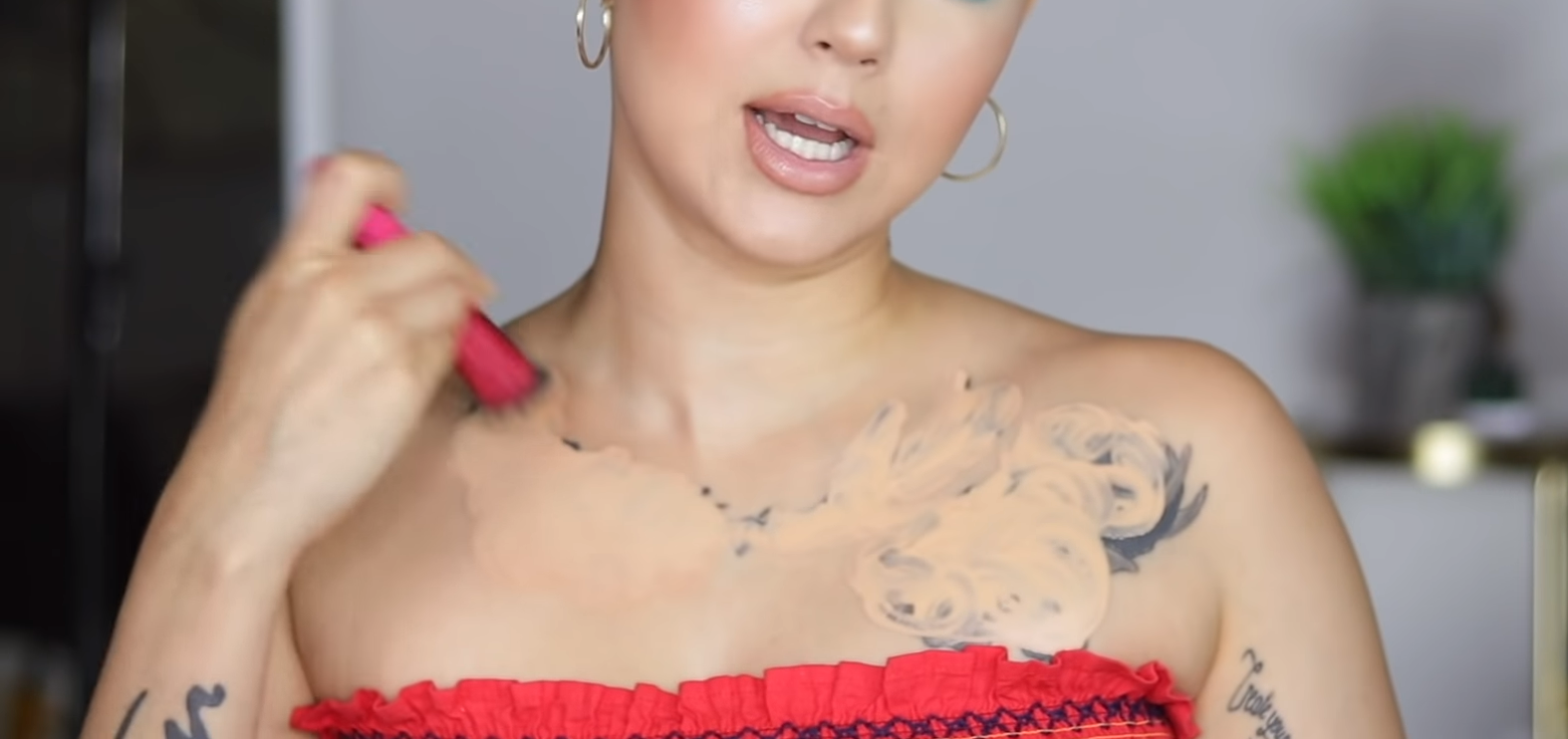
Ways to Cover a Tattoo At Work
In this section, we will explore various ways to cover a tattoo at work. Depending on the size, location, and color of your tattoo, as well as the dress code in your workplace, there are a variety of methods you can use.
Use Clothing to Cover Tattoos at Work
The simplest and most cost-effective method to hide your tattoos at work is strategic clothing. Long-sleeved shirts, turtlenecks, and blazers can effectively cover tattoos on the arms, chest, and back. If your tattoo is on your lower body, consider wearing long pants, stockings, or high boots to keep them hidden. Remember, the type of clothing you choose should comply with your workplace dress code and be comfortable for you to wear throughout the workday.
Patterns can also help to distract the eye and make tattoos less noticeable. Remember, the goal is not only to hide your tattoo but also to do it in a way that doesn’t draw unnecessary attention or compromise your professional appearance. Your clothing choices should enhance your overall presentation and align with your company’s culture and expectations.
The Best Makeup To Cover Tattoos
When it comes to using makeup to cover tattoos, a multi-step approach generally yields the best results. Start with a high-quality color corrector. Tattoos often have a range of colors, so you might need a few different color correctors to neutralize the tattoo ink.
For example, orange correctors are effective at neutralizing blue and black inks, while green correctors work well against red hues. After applying the corrector, blend it out to create a smooth, even surface. Next, apply a heavy-duty concealer that matches your skin tone. It’s crucial to choose a highly pigmented concealer to ensure maximum coverage. Blend the concealer into your skin, making sure to feather out the edges to avoid an obvious demarcation line. After this, apply a layer of full-coverage foundation over the area. Finally, set your makeup with a generous amount of translucent powder to prevent it from smudging or transferring throughout the day.
Brands like Dermablend, Kat Von D, and Make Up For Ever offer lines of products specifically designed to cover tattoos, and these can be excellent options if you’re unsure of what to purchase. Remember, practice makes perfect – the more you experiment with different products and techniques, the better your results will be. It’s also worth noting that makeup is a temporary solution and will need to be reapplied daily.

Specialized Tattoo Cover Products
In addition to regular makeup, there are dedicated tattoo cover-up products available in the market specifically designed for this purpose. These products are often more effective and long-lasting than regular concealer or foundation, providing a more convenient and efficient solution for those needing to conceal their tattoos frequently.
One such product is tattoo cover-up tape. This product, which comes in a range of skin tones, can be cut to the size of the tattoo and adhered to the skin for a quick and easy cover-up. [1] The tape is waterproof and sweatproof, making it a reliable option for long workdays.
Accessories and Bandages
Accessories and bandages serve as an alternative or supplementary solution for those seeking to camouflage their tattoos. A well-placed accessory or bandage can help to mask a small tattoo or lend a stylish touch to your overall appearance.
Accessories like watches, bracelets, large rings, necklaces, and scarves can play a dual role – they not only enhance your outfit but also serve to cover small to medium-sized tattoos. [2] If your tattoo is on your wrist, a chunky watch or bracelet can be used to hide it. Similarly, a wide choker or scarf can be used to cover neck tattoos. Carefully selected accessories can provide an effective camouflage, and with a plethora of styles available, you can easily find pieces that align with your personal style and professional environment.
Placing the bandage carefully on the tattoo and smoothing it out to ensure there are no wrinkles or bubbles can help it blend seamlessly with your skin. However, while this method is effective, it’s also important to note that frequent use of bandages can cause skin irritation. Therefore, it is essential to give your skin a break and allow it to breathe whenever possible.
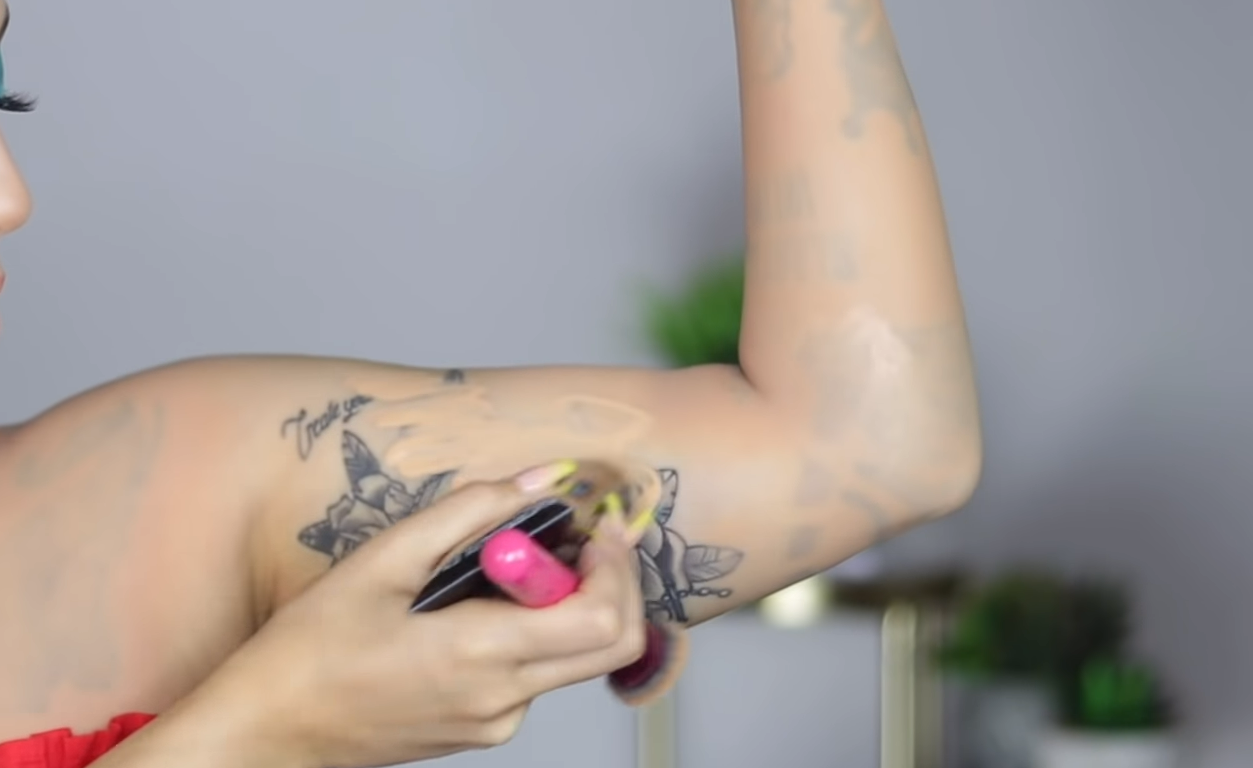
Tattoo Cover Sleeves
Tattoo cover sleeves offer a practical and effective solution for covering large tattoos, especially those located on arms or legs. These sleeves are usually made from a stretchable, breathable fabric designed to mimic skin tones, making them less conspicuous and more comfortable to wear for extended periods. [3] To use a tattoo cover sleeve, begin by selecting a shade that closely matches your skin tone for a more natural look.
Start by cleaning the area where the sleeve will be placed, as this ensures better adherence of the fabric to the skin and prolongs the longevity of the sleeve. Once the area is clean and dry, slide the sleeve over the tattooed area, ensuring it completely covers the tattoo. Smooth out any wrinkles or folds in the fabric to create a seamless appearance. Depending on the sleeve, it may have elastic bands at the ends to secure it in place. If it does, make sure these bands are comfortably snug but not too tight to avoid restricting blood circulation. The sleeve should fit snugly but comfortably on your arm or leg, almost like a second skin.
Remember, while the sleeve is designed to be durable and long-lasting, it will still require care. Washing it after each use can help maintain its quality and elasticity. In addition, avoid exposing the sleeve to high temperatures or harsh chemicals, as these can damage the material and affect its ability to conceal tattoos.
Let Your Hair Down
Long hair can be a natural and stylish way to cover tattoos located on the neck, upper back, or shoulders. With the versatility of hairstyles available, long hair provides an easy and adaptable camouflage option. Straight hair might provide a more effective cover for larger tattoos, while wavy or curly hair can add a level of unpredictability that can help hide smaller, more irregularly shaped tattoos.
Furthermore, hairstyles can be adjusted and varied according to your outfit, occasion, or mood, making this a flexible and personalized option. Remember, caring for your hair is important to maintain its health and shine, especially if you’re using it to cover your tattoos. Regular trimming, conditioning, and suitable hair products can keep your hair looking its best and provide the coverage you need. Whether you decide to let your hair down or style it in elaborate updos, your hair can be a great ally in your quest to cover your tattoos while also serving as a key aspect of your personal style.
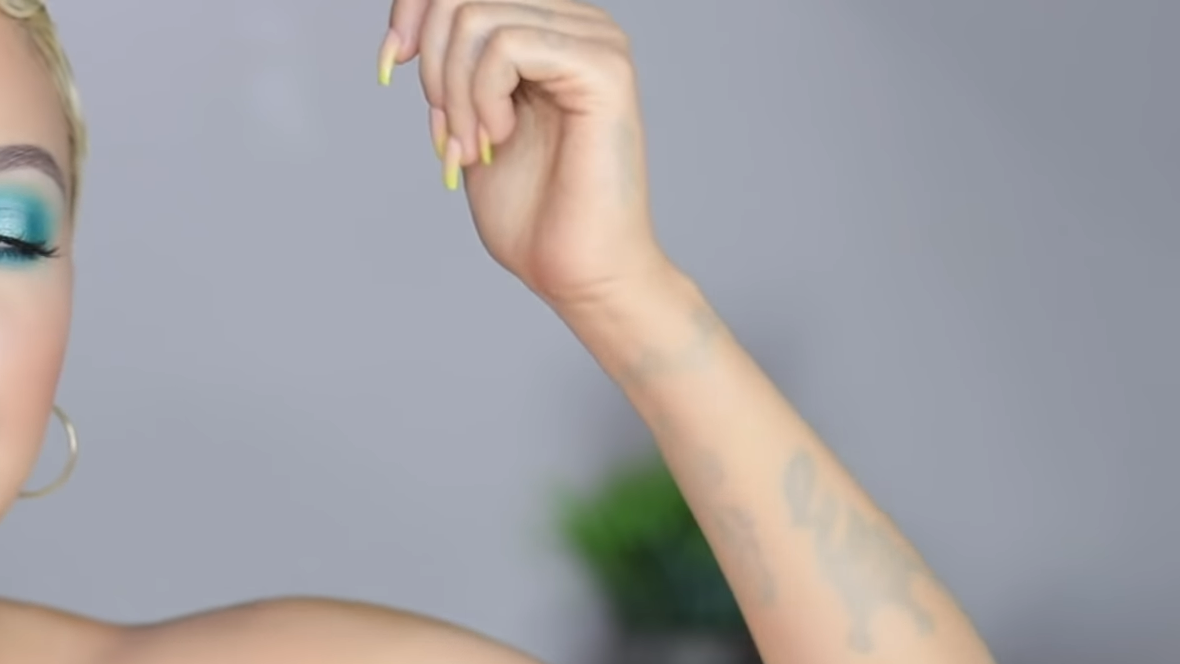
Communication
In some scenarios, the most effective method of dealing with tattoos in a professional setting is through clear and open communication. If you have visible tattoos, it’s advisable to discuss them with your employer or HR representative early on to understand their perspective and policies regarding tattoos in the workplace. Some organizations may have strict rules requiring tattoos to be covered, while others may be more lenient, especially if the tattoo is relatively small, unobtrusive, or not offensive. By having this conversation, you’re demonstrating respect for your employer’s expectations and a proactive approach to maintaining a professional appearance.
However, remember that this conversation should be carried out tactfully and professionally. Explain your willingness to comply with the company’s dress code and seek their advice on acceptable ways to cover your tattoos, if necessary. This approach not only helps in setting clear expectations but also creates an opportunity for dialogue, fostering mutual understanding and respect.
“Fake” an Injury
While this method might not be the most straightforward approach to covering tattoos, it can be a useful temporary solution in certain cases. The idea here is to use medical equipment like a brace or a bandage to cover your tattoo, giving the impression that you have an injury. This strategy is particularly effective for tattoos on the arms, legs, or wrists, where these items would naturally be placed.
For instance, if you have a wrist tattoo, wearing a wrist brace can effectively cover it up. Similarly, an arm or leg brace can hide larger tattoos in these areas. Keep in mind, though, that this method should only be used sparingly, as repeatedly showing up with different “injuries” might raise suspicion. It’s also crucial to remember that these medical devices are primarily designed to provide support to injured body parts and not for fashion or concealment purposes. Misusing them can potentially lead to discomfort or even harm.
In conclusion, while faking an injury to cover a tattoo is an unconventional and potentially contentious method, it can serve as a last resort when more traditional methods are not viable. As always, it’s essential to prioritize comfort and health over aesthetics. And remember, honesty usually leaves the best impression, so reserve this method for situations where a short-term fix is needed.

How to Cover Arm Tattoos for Work
Covering arm tattoos for work can be managed in several ways:
- Clothing: Long-sleeved shirts or blouses are an easy and effective way to cover arm tattoos. These can be in various materials and styles, appropriate for different seasons and climates. For example, lightweight, breathable fabrics like cotton or linen can be suitable for warmer weather, while thicker fabrics like wool can be used in cooler climates. It’s important to ensure the clothing does not feel overly tight on your tattoo, which can cause discomfort, particularly if the tattoo is new or sensitive.
- Tattoo Cover-Up Makeup: Specialized tattoo cover-up makeup is another option. These products are available in a range of skin tones and can provide coverage that lasts for hours. To use this method, start by cleansing the skin area where the tattoo is located. Apply a thin layer of the tattoo cover-up makeup and blend it into the surrounding skin for a seamless look. You may need to apply multiple layers depending on the size and color intensity of your tattoo. Remember to set it with a setting powder or spray to ensure the makeup doesn’t rub off on your clothes.
- Tattoo Cover Sleeves: Another early mentioned option for covering arm tattoos is the use of tattoo cover sleeves. These are fabric sleeves that you can slip onto your arm to cover your tattoo. They come in a variety of skin tones and sizes. Just like a long-sleeved shirt, the sleeve should be comfortable and breathable. Care should be taken to ensure they match your skin tone closely for a more natural look.
Remember, it’s always important to balance comfort with appearance. Constantly covering a tattoo with tight, uncomfortable clothing, or not properly setting makeup can lead to skin irritation. Therefore, it’s essential to find a method that suits you and your work environment.

Covering Up Tattoos for Your Job: Two Important Things to Know
While making an effort to cover your tattoos can help maintain a professional appearance in certain job scenarios, two crucial factors should be kept in mind.
Firstly, remember that tattoos are a personal expression and part of your individuality. Having to cover them up doesn’t in any way undermine their significance or your identity.
Secondly, societal attitudes towards tattoos are changing, with many modern workplaces becoming more accepting of visible tattoos. This shift is, however, largely dependent on the organizational culture and the nature of the job. In creative or artistic fields, for instance, tattoos might be seen as a testament to one’s creativity and unique perspective.
Therefore, while the advice provided here is practical for scenarios where covering up is necessary, it’s equally important to seek workplaces where your individuality is respected and valued. As the old saying goes, “Everyone shines, given the right lighting.”
Looking To Permanently Cover Up Your Tattoos?
If you’re considering a permanent solution to cover your tattoos, tattoo removal procedures or tattoo cover-ups are two possible options. Tattoo removal, such as laser tattoo removal, involves using high-powered lasers that break up the ink particles in the skin, which your body then naturally eliminates. This method can require multiple sessions, depending on the size and color of the tattoo.
Alternatively, a tattoo cover-up is a new tattoo designed and inked over the existing one to hide the original artwork. It’s important, however, to consult with a professional tattoo artist to determine the feasibility of this option, as not all tattoos are suitable for a cover-up. Always consider these options carefully, as they are both more permanent and costlier than the methods discussed above.
Frequently Asked Questions
How can I cover my tattoo while working?
Covering tattoos for work can be achieved by several methods. You could wear clothing that adequately covers your tattoos, like long-sleeved shirts or trousers. Another option is using specialized tattoo cover-up makeup or tattoo cover sleeves. For a more permanent solution, you could consider tattoo removal procedures or tattoo cover-ups, but these should be considered carefully due to their permanence and cost. Always remember, that it’s crucial to prioritize comfort and skin health when choosing how to cover your tattoos.
Do I need to cover tattoos for work?
Whether or not you need to cover tattoos for work primarily depends on the workplace culture and the nature of the job you’re in. Some organizations or professions might require a more conservative appearance where tattoos need to be covered, such as in corporate settings or customer-facing roles. Others might be more relaxed about tattoos, particularly in creative industries. It’s important to understand the specific dress code or guidelines of your workplace, and when in doubt, it’s a good idea to discuss this with your HR representative or supervisor. Ultimately, the goal is to maintain a professional appearance that aligns with your company’s culture and values.
How can I cover my wrist tattoo at work?
Wrist tattoos can be effectively covered using a few different methods. One of the simplest ways is by wearing accessories such as wristbands, bracelets, or watches that can conceal the tattoo. Another method is employing tattoo cover-up makeup, which is available in various skin tones and can blend seamlessly with your skin to hide the tattoo. A third option could be wearing long-sleeved shirts or blouses with cuffs that reach the wrist. Remember, it’s important to choose a method that not only conceals effectively but also offers comfort throughout the day. Consider also the compatibility of your chosen method with your work environment and professional role.
What can I use to hide my tattoo?
To hide a tattoo, you have several options available. Clothing is the simplest method, with pieces like long-sleeved shirts, trousers, or accessories like wristbands and scarves effectively concealing tattoos located on various parts of the body. Another readily available option is using makeup specifically designed for tattoo cover-ups. This makeup comes in different skin tones and, when used correctly, can make tattoos virtually invisible. There are also tattoo cover sleeves, which are fabric sleeves slipped over the arm to hide tattoos. If these temporary solutions are not enough, more permanent options include tattoo removal procedures or getting a new tattoo designed to cover the old one. Always remember that the most suitable method depends on the tattoo’s size, location, color intensity, comfort, and the rules of your work environment.
Useful Video: COVERING ALL MY TATTOOS WITH MAKEUP
Conclusion
In conclusion, dealing with tattoos in a professional context can be a nuanced process, influenced by many factors including the nature of your work, your workplace culture, and personal comfort. There are multiple ways to cover tattoos temporarily, from clothing to specialized makeup and cover sleeves. More permanent solutions include tattoo removal procedures or tattoo cover-ups, though these are more costly and involve a greater commitment. The key is to find a balance between your personal expression and the professional image required by your occupation. As societal attitudes towards tattoos continue to evolve, it’s hopeful that more workplaces will come to respect and value the individuality that tattoos can represent. Whatever your choice, remember that your tattoos are a part of you, and nothing can take away their significance or your identity.
References:
- https://foundation-tape.net/en.php
- https://www.wikihow.com/Cover-a-Tattoo-Without-Makeup
- https://www.wikihow.com/Cover-a-Tattoo-for-Work


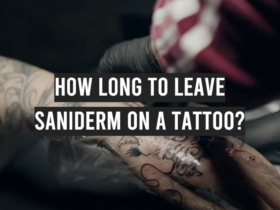


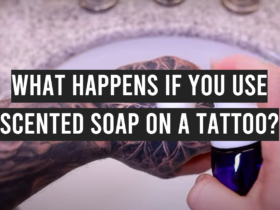
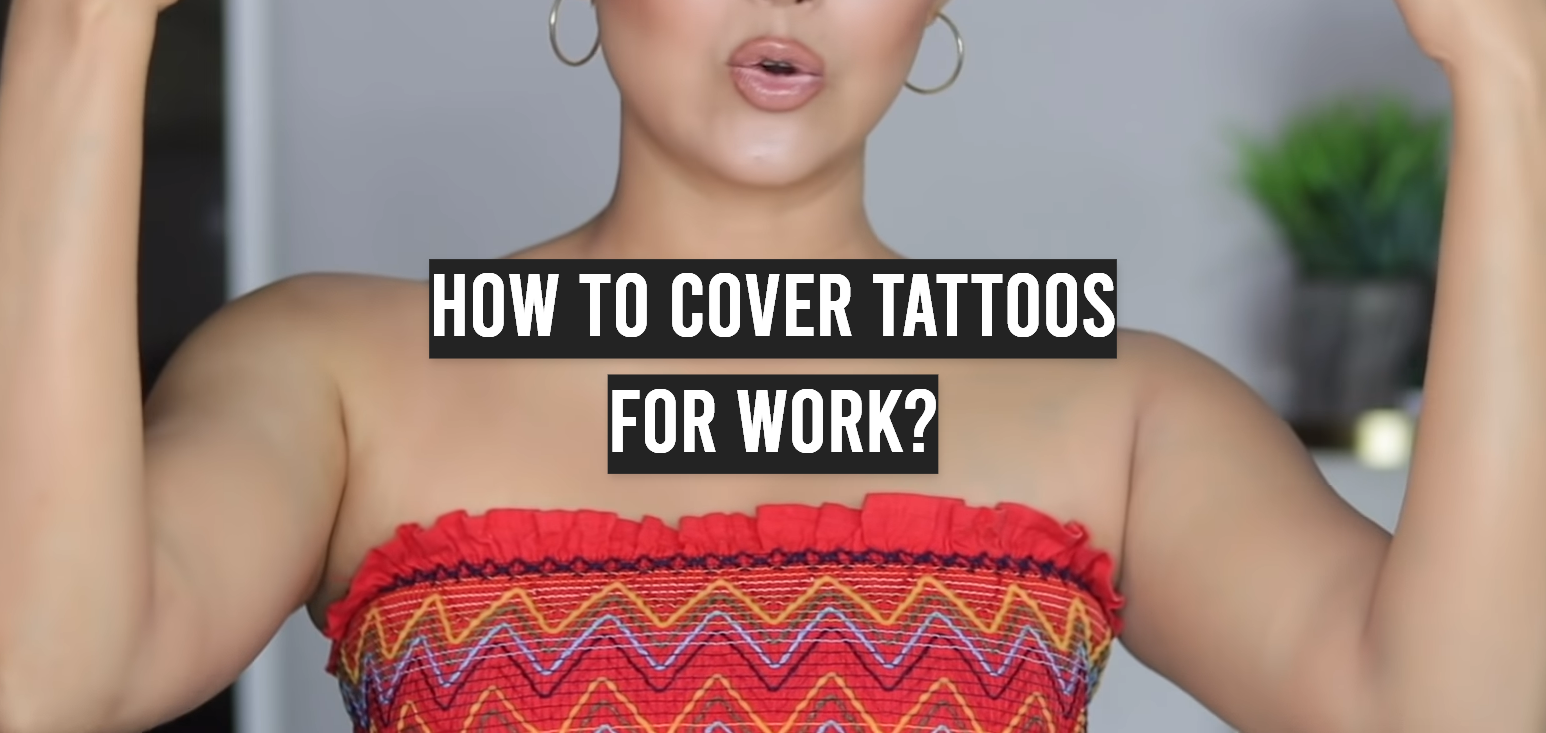
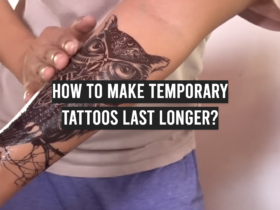

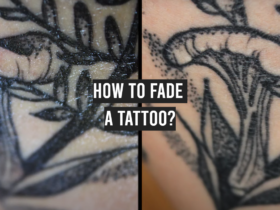

Leave a Review